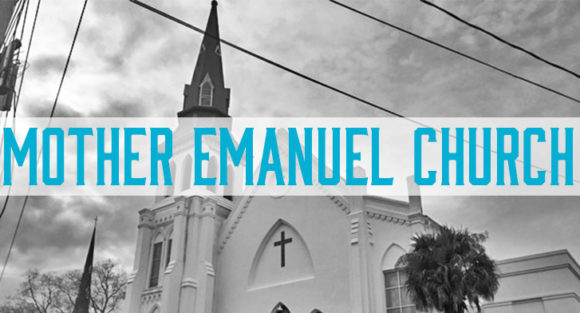‘Sheltering wings:’ Charleston memorial plan conveys solace – Mother Emanuel AME
By JONATHAN DREW, AP (Associated Press)
Designs for a memorial to nine black worshippers slain at a South Carolina church began not at a drafting table, but with questions from grieving family members to prospective architects. They didn’t want to see any drawings until they sat down with the eventual designer to discuss how best to honor loved ones lost in the racist attack at Emanuel AME Church.
The result of those conversations, the planners say, will be less of a solemn monument and more of a heavenly embrace to those visiting the historic Charleston church.
Church officials unveiled detailed plans Sunday afternoon for the permanent tribute designed by the architect behind the 9/11 Memorial in New York. The announcement, coinciding with the 200th anniversary of the church known as “Mother Emanuel,” will be followed by a push to raise the money needed to build the memorial and prayer garden.
Church officials say the design conveys both solace and resiliency. A marble fountain with carvings of the victims’ names will be flanked by curved stone benches that rise above visitors’ heads and cradle the space “like sheltering wings,” according to a news release.
“When you walk into the memorial, it’s going to give you the feeling of being embraced, just embraced with warmth,” said City Councilman William Dudley Gregorie, a church trustee who lost a loved one in the June 2015 attack.
The nine worshippers were shot during Bible study by a man who said he intended to kill people at the historic church to stoke racial tensions. He’s been sentenced to death.
In honoring the victims, architect Michael Arad said the project also will pay homage to the church’s history as a living community, not just a geographic location.
“At the heart of the design of the new memorial is the notion of congregation — of creating a place that fosters a sense of community that invites people in,” Arad said in an interview.
The church, among the oldest black congregations in the South, has stood as a beacon for the past two centuries despite adversity. It was torched by whites in its early years after a failed slave revolt, and since then, it has been rebuilt or repaired after natural disasters.
Thus, Gregorie said, the memorial and prayer garden will also give visitors a “sense of resiliency and survival.”
Discussions about a permanent tribute to the victims began in the months after the shooting, said local businessman John Darby, who helped set up a memorial fund for the church. Darby estimated it could take more than $15 million for construction and an endowment to maintain the memorial.
At the outset, prospective architects were asked not to submit designs but to answer written questions about their emotional reaction to the shootings, said Arad.
Arad, announced as architect in June 2017, began developing the designs through further conversations with the victims’ loved ones, other congregants and a church committee.
“It was really about bringing things to the table and discussing them with the group and hearing responses and understanding what resonated,” he said.
The design process was often intertwined with grief.
“There were days we just passed around a tissue box,” Darby said.
Such moments helped to make sure that the design serves the families and wider congregation, Arad said.
“Unless you develop this firsthand knowledge and connection of who you’re meant to serve in designing a memorial, you’re not going to be able to develop the empathy required for the appropriate response,” the architect said. “So, yes, as you can imagine it was difficult, but it’s absolutely essential.”
___
Follow Drew on Twitter at https://twitter.com/JonathanLDrew


